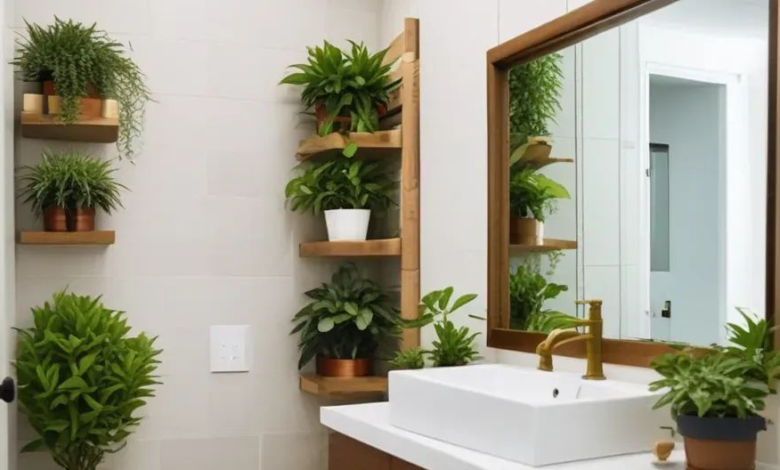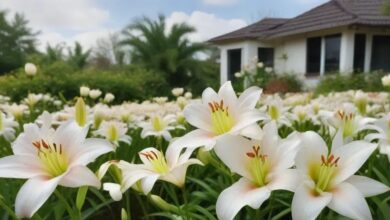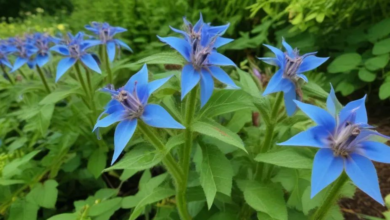Bathroom Plants That Absorb Moisture for a Fresh and Healthy Oasis
Discover a lush oasis with our selection of moisture-absorbing bathroom plants.

Mold and mildew thrive in damp environments, and bathrooms are no exception. This is because of the high humidity that results from people frequently bathing and showering in these rooms. But if you want a more natural way to control the humidity in your bathroom while also adding some greenery, try bringing some moisture-absorbing plants in. Read on to learn about the many uses for water-loving houseplants, how to choose the right ones for your bathroom, and how to keep them alive and well for years to come.
Understanding the Importance of Bathroom Plants
1. Humidity Regulation:
To keep the relative humidity in the restroom at a healthy level, houseplants can take in water via their leaves and expel it through transpiration.
2. Air Quality Improvement:
In addition to absorbing moisture, many plants have air-purifying capabilities, meaning they may remove contaminants and toxins from indoor air.
3. Aesthetic Enhancement:
Bathroom plants not only serve a practical purpose, but they also beautify the area and provide a soothing, spa-like ambiance, which is great for unwinding and feeling better overall.
Selecting the Ideal Plants for Your Bathroom
1. Peace Lily (Spathiphyllum):
The peace lily is a beautiful plant that naturally grows in dim light and is great at removing pollutants from the air because to its delicate white blossoms and ability to absorb moisture.

2. Boston Fern (Nephrolepis exaltata):
The Boston fern (Nephrolepis exaltata ‘Bostoniensis’) is a classic houseplant with luxuriant foliage and beautiful arching fronds. Indoors, its lush beauty brings the tropics to any area. This book covers the history, maintenance, and fascinating traits of the Boston fern so you may grow a living art piece in your home.

3. Spider Plant (Chlorophytum comosum):
The spider plant is great for bathrooms because it can adapt to different light conditions and soak up excess moisture, which improves the air quality in the space.

4. Snake Plant (Sansevieria trifasciata):
The snake plant is perfect for bathrooms because of its low watering requirements, durability, and ability to grow in dim light.

Tips for Caring for Bathroom Plants
1. Light Requirements:
Because of the lack of natural light in most bathrooms, it is best to place plants in places with indirect or dim light. Another option is to augment light levels with artificial grow lights.
2. Watering:
To avoid root rot caused by overwatering, let the top inch of soil dry out in between waterings. Avoid watering the foliage by directing the water to the earth using a watering can with a narrow spout.
3. Humidity Management:
You should change the watering schedule according to the humidity level you find in the restroom. To keep things just right, you might want to invest in a dehumidifier and a hygrometer.
4. Pruning and Maintenance:
To keep the plant looking good and encourage healthy growth, remove any leaves that are browning or dead on a regular basis and prune back any overgrown foliage.
5. Cleaning:
Dust and dirt can hinder a plant’s capacity to absorb water, so it’s important to keep its leaves clean by gently cleaning them with a moist cloth or spraying them with water.
Creative Display Ideas for Bathroom Plants
1. Hanging Planters:
For a space-saving and aesthetically pleasing display, try suspending plants from the ceiling or walls using ornamental macramé hooks.

2. Wall-Mounted Shelves:
Showcase plants and add greenery to vertical surfaces, like those above the toilet or next to the vanity, by installing wall-mounted planters or floating shelves.

3. Freestanding Plant Stands:
To make the most of natural light and establish a little inside garden, position plants on mobile plant stands or carts close to windows or other light sources.

4. Terrariums:
Miniature ecosystems can be made by placing plants that thrive in damp environments in clear containers, such as jars or terrariums. This not only adds a whimsical element to your bathroom décor but also helps regulate humidity levels.

Conclusion:
One easy way to improve air quality, control humidity levels, and add to the bathroom’s ambiance is to decorate with moisture-absorbing plants. You can make your own verdant haven where you can relax and recharge in the company of nature’s splendor by picking out the correct plants and giving them the attention they need. So why not make your bathroom a haven of peace and tranquility by adding some plants?
FAQ’s
What plants absorb moisture in the bathroom?
- Peace Lily (Spathiphyllum):…
- Boston Fern (Nephrolepis exaltata):.
- Snake Plant (Sansevieria):.
- Aloe Vera (Aloe barbadensis ‘Miller’):.
- Spider Plant (Chlorophytum comosum):.
- English Ivy (Hedera Helix):
What should I put in a bathroom to absorb moisture?
If you want your bathroom to stay dry and healthy while you soak, plant some aloe vera (Aloe barbadensis). Arachnidae, most commonly known as spider plants Nephrolepis exaltata, also known as Boston Fern
Should you put plants in the bathroom?
If you want to make a statement in an otherwise clinical setting, a houseplant is the way to go. You should look for alternatives that are well-suited to the circumstances found in most bathrooms, since not all plants will do well inside.











